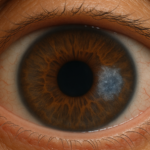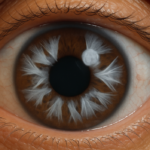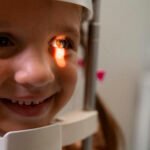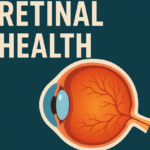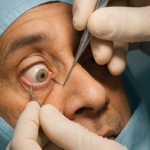– What is diabetic retinopathy?
Diabetic retinopathy is a condition in which high blood sugar causes swelling of the retinal blood vessels leakage of the blood vessels and subsequent loss of vision.
– Who is at risk of diabetic retinopathy?
All patients with diabetic mellitus are at risk. The longer the duration of diabetes and large fluctuations of the blood sugar increase the risk of the disease.
– Is there some way to prevent diabetic retinopathy?
Good control of blood sugar, control of any associated blood pressure, and high cholesterol levels helps in delaying the onset of this disease.
– Does controlling the blood sugar slow the onset of diabetic retinopathy?
Good control of blood sugar delays the onset and progression of diabetic retinopathy. If the sugar is near normal, the risk of kidney and nerve disease is also lower. Better control reduces the risk of sight-saving laser surgery.
– How does diabetic retinopathy lead to vision loss?
The abnormal and fragile blood vessels can leak and lead to swelling or fluid accumulation in the center of the macula leading to a reduction of vision which is also called diabetic macular edema. This is more likely to occur as the disease progresses.
– Does diabetic retinopathy have any symptoms?
In the early stages, this disease does not lead to any symptoms. There could be floaters, black spots, or reduced vision. Since it has no warning symptoms, there is a need to be alert and get the eyes checked once a year at least. Left untreated it can lead to severe vision loss and blindness. The earlier one takes treatment less the chance of severe visual impairment.
– How are diabetic macular edema and retinopathy detected?
The eye doctor examined your vision and the retina of your eyes by using a special magnifying lens. Most of the time they will dilate your eyes because this helps the eye doctor to get a better view of the retina. They may also perform further tests like OCT ( optical coherence tomography) or FFA ( fundus fluorescein angiography) to further evaluate your eyes and plan the treatment.
– What is optical coherence tomography?
This is a special test on an advanced machine that helps us to view the different layers of the retina. If there is fluid accumulation in the layers it can be clearly seen. In addition, any deposits in the different layers can be seen clearly. This can be a good means to catch the disease early and start appropriate treatment.
– How is diabetic retinopathy treated?
The presence of abnormal vessels is treated by laser therapy. The procedure is called pan-retinal photocoagulation. This treatment reduces the risk of blood and fluid leaking into the retina. In addition, this is known to reduce the risk of severe visual loss by 50 %. One to three sessions may be needed to stabilize the vision loss. In case there is diabetic macular edema or vitreous hemorrhage, an injection of anti-VEGF agents like ranibizumab can be performed into the vitreous cavity. This treatment is also very effective. Rarely there may be a need to perform surgery in the form of a vitrectomy if the blood in the vitreous is not clearing.
– What happens during laser treatment?
Both the focal and scatter laser procedures are outpatient procedures. The pupil is first dilated and then the laser is applied to the eyes. Multiple laser burns are then applied to the eyes. Flashes of light may be seen but there is no pain after the laser, sometimes this may lead to minimal discomfort.
– What happens during anti-VEGF injections?
The injection of anti-VEGF is given in the operation theater under aseptic precautions. Sometimes there may be slight pain and one may see a black shadow in front of the eyes. A patch must be put on the eyes after the injection and drops are prescribed.
– What should be done in case I develop diabetes?
Everyone with diabetes must have a dilated eye examination including a dilated fundus examination at least once a year. If one has diabetic retinopathy one needs to have a fundus examination every 6 months. With treatment on time and follow up the risk of blindness can be reduced. It is a must to undergo regular eye examination once one is detected to have diabetes. Early treatment can slow the progression of diabetic retinopathy, but any visual loss cannot be reversed.


